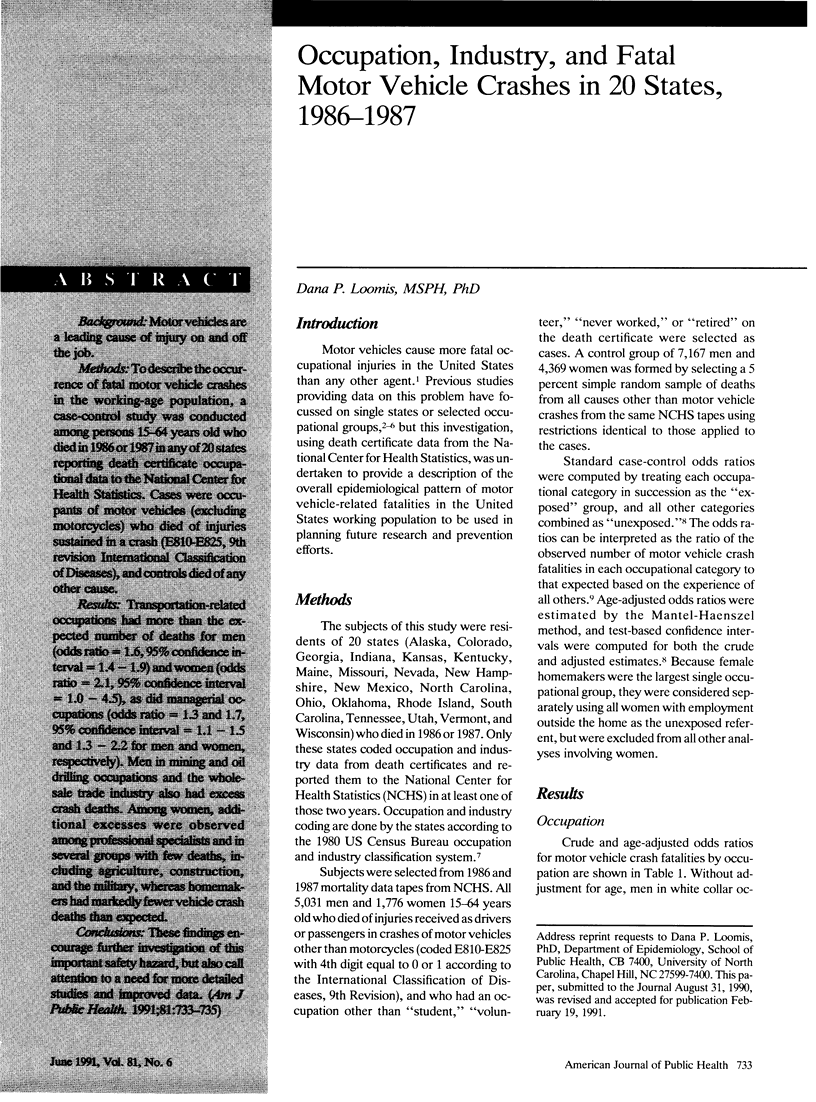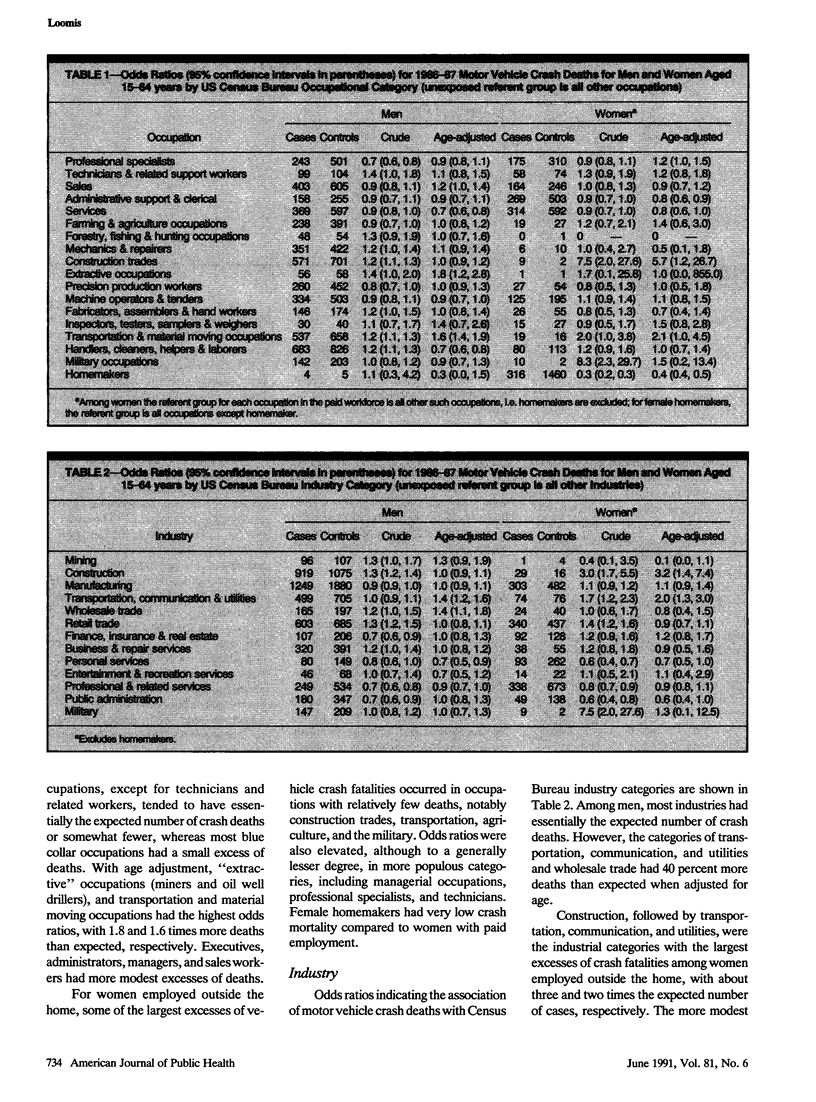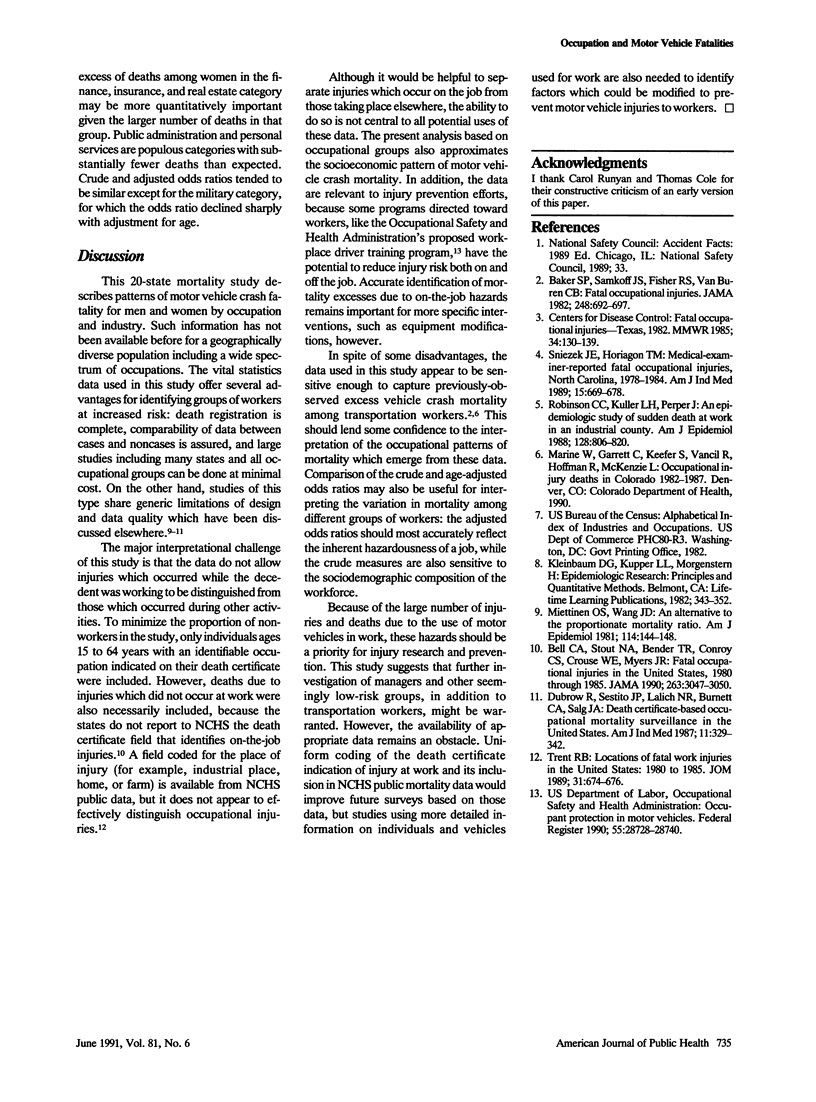Abstract
BACKGROUND: Motor vehicles are a leading cause of injury on and off the job. METHODS: To describe the occurrence of fatal motor vehicle crashes in the working-age population, a case-control study was conducted among persons 15-64 years old who died in 1986 or 1987 in any of 20 states reporting death certificate occupational data to the National Center for Health Statistics. Cases were occupants of motor vehicles (excluding motorcycles) who died of injuries sustained in a crash (E810-E825, 9th revision International Classification of Diseases), and controls died of any other cause. RESULTS: Transportation-related occupations had more than the expected number of deaths for men (odds ratio = 1.6, 95% confidence interval = 1.4-1.9) and women (odds ratio = 2.1, 95% confidence interval = 1.0-4.5), as did managerial occupations (odds ratio = 1.3 and 1.7, 95% confidence interval = 1.1-1.5 and 1.3-2.2 for men and women, respectively). Men in mining and oil drilling occupations and the wholesale trade industry also had excess crash deaths. Among women, additional excesses were observed among professional specialists and in several groups with few deaths, including agriculture, construction, and the military, whereas homemakers had markedly fewer vehicle crash deaths than expected. CONCLUSIONS: These findings encourage further investigation of this important safety hazard, but also call attention to a need for more detailed studies and improved data.
Full text
PDF


Selected References
These references are in PubMed. This may not be the complete list of references from this article.
- Baker S. P., Samkoff J. S., Fisher R. S., Van Buren C. B. Fatal occupational injuries. JAMA. 1982 Aug 13;248(6):692–697. [PubMed] [Google Scholar]
- Bell C. A., Stout N. A., Bender T. R., Conroy C. S., Crouse W. E., Myers J. R. Fatal occupational injuries in the United States, 1980 through 1985. JAMA. 1990 Jun 13;263(22):3047–3050. [PubMed] [Google Scholar]
- Dubrow R., Sestito J. P., Lalich N. R., Burnett C. A., Salg J. A. Death certificate-based occupational mortality surveillance in the United States. Am J Ind Med. 1987;11(3):329–342. doi: 10.1002/ajim.4700110309. [DOI] [PubMed] [Google Scholar]
- Miettinen O. S., Wang J. D. An alternative to the proportionate mortality ratio. Am J Epidemiol. 1981 Jul;114(1):144–148. doi: 10.1093/oxfordjournals.aje.a113161. [DOI] [PubMed] [Google Scholar]
- Robinson C. C., Kuller L. H., Perper J. An epidemiologic study of sudden death at work in an industrial county, 1979-1982. Am J Epidemiol. 1988 Oct;128(4):806–820. doi: 10.1093/oxfordjournals.aje.a115034. [DOI] [PubMed] [Google Scholar]
- Sniezek J. E., Horiagon T. M. Medical-examiner-reported fatal occupational injuries, North Carolina, 1978-1984. Am J Ind Med. 1989;15(6):669–678. doi: 10.1002/ajim.4700150606. [DOI] [PubMed] [Google Scholar]
- Trent R. B. Locations of fatal work injuries in the United States: 1980 to 1985. J Occup Med. 1989 Aug;31(8):674–676. doi: 10.1097/00043764-198908000-00011. [DOI] [PubMed] [Google Scholar]


